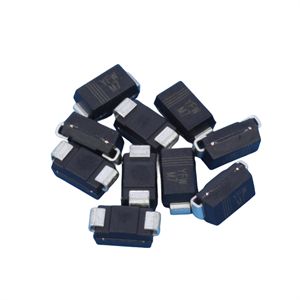Date:2024-10-30 Categories:Product knowledge Hits:394 From:Guangdong Youfeng Microelectronics Co., Ltd
1. Positive and negative pole discrimination of ordinary surface mount diodes
The identification of the positive and negative terminals of a surface mount diode is usually done by observing the markings on the diode casing. When the markings on the casing are severely worn, a multimeter with an ohm range can be used for identification.
Place the multimeter in the R × 100 Ω or R × 1 k Ω range, first use the red and black probes of the multimeter to measure the resistance between the two pins of the SMD diode, and then swap the probes and measure again.
Among the two measurement results, choose the one with the smaller resistance value. The black probe is connected to the positive terminal of the surface mount diode, and the red probe is connected to the negative terminal of the surface mount diode;
The measured resistance value is the forward resistance of the surface mount diode (usually several hundred to several thousand ohms), and the other set of resistance values is the reverse resistance of the surface mount diode (usually several tens to hundreds of kiloohms).

Previous: Classification, Structure, and Principle of MOSFET
Next: Using voltage inspection method to quickly locate fault points in integrated circuits